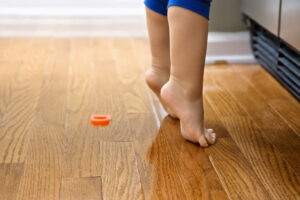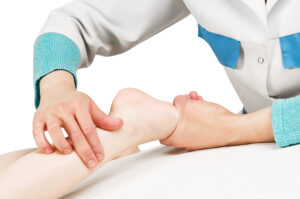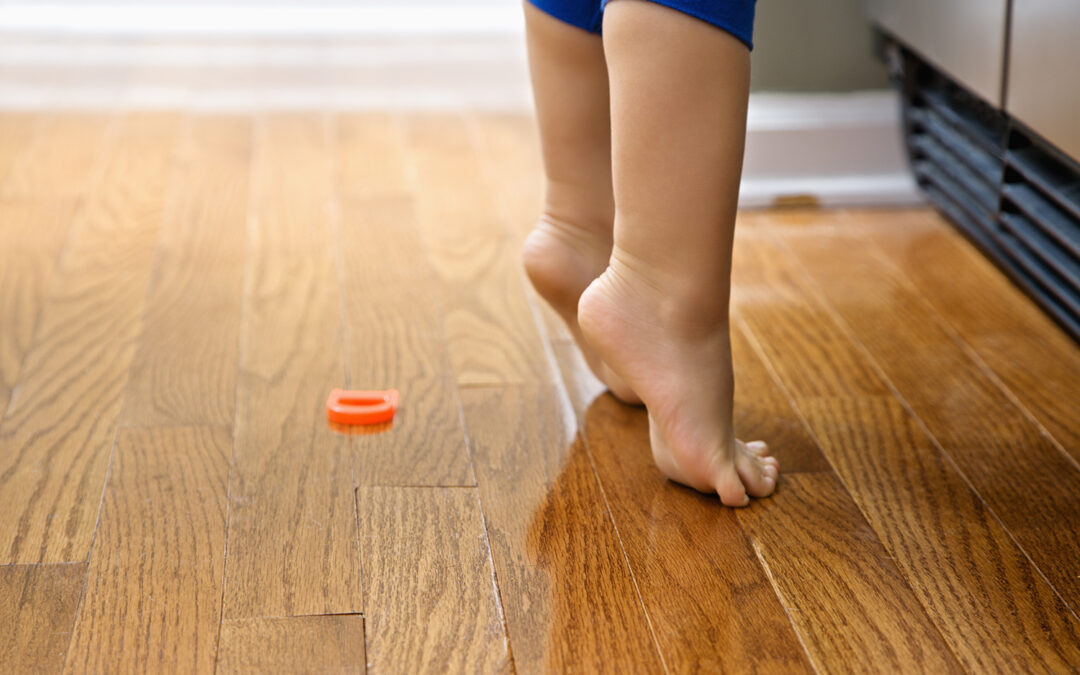 Sure we go up on our toes to reach objects out of our reach, when we are trying to be quiet and not be noticed, when we are trying to step over puddles, etc. Walking on our tip toes becomes a problem when the majority of the time we are walking, running, jumping, etc. is on our toes. Toe walking or tip toeing should be something we do occasionally and not all of the time.
Sure we go up on our toes to reach objects out of our reach, when we are trying to be quiet and not be noticed, when we are trying to step over puddles, etc. Walking on our tip toes becomes a problem when the majority of the time we are walking, running, jumping, etc. is on our toes. Toe walking or tip toeing should be something we do occasionally and not all of the time.When does this become a concern for children? Toe walking becomes a concern if it continues past the age of two years and is the main way a child walks, runs, jumps, plays, or gets around their everyday environments. Continual toe walking can be as simple as a habit a child has developed or can potentially point towards something happening within the muscles, nerves, tissues, and joints of the body.
Why do some children toe walk when others do not? Sometimes toe walking is related to a child having sensory problems. It could be they do not like how the ground feels on their feet, so they begin toe walking to try and limit the amount of time they actually touch the ground with their feet. They may have proprioceptive concerns which mean the way their bodies are positioned in space feels more secure when they are up on their tiptoes. The same is also possible for children with vestibular (or equilibrium) concerns who end up toe walking. They feel more secure and ‘balanced’ on their toes. Another possibility is children who have difficulty with motor control and feel more in control of their body and balance when they toe walk than when they are flat footed. Most of these areas lead to a child developing a habit of walking on their toes, which is difficult to break, especially the longer they walk on their toes.
 If a child continues to walk on their toes, what are the potential problems which they may encounter? The concern children face with long time toe walking typically is tightening of their calf muscles. The longer a child walks on their toes, the greater the possibility for their calf muscles and their heel cords (muscles and tendons attached to our heels) to become increasingly tighter and potentially form contractures (significant muscle, tendon, and ligament tightness in which the child no longer has the ability to move out of a toe walking position, i.e. they actually become ‘stuck’ in this position). If a child ends up with a contracture of the calf and heel cord, the only solution at that point is surgical correction. If a child presents with a moderate tightening, then serial casting may need to be performed (wearing of casts for at least 4 weeks in a position to allow a long term stretch to the muscles, tendons, and ligaments) to help decrease the muscular tightness. Occasionally, there may be a neurological reason for a child who walks on their toes. This would require meeting with and having tests performed by a neurologist.
If a child continues to walk on their toes, what are the potential problems which they may encounter? The concern children face with long time toe walking typically is tightening of their calf muscles. The longer a child walks on their toes, the greater the possibility for their calf muscles and their heel cords (muscles and tendons attached to our heels) to become increasingly tighter and potentially form contractures (significant muscle, tendon, and ligament tightness in which the child no longer has the ability to move out of a toe walking position, i.e. they actually become ‘stuck’ in this position). If a child ends up with a contracture of the calf and heel cord, the only solution at that point is surgical correction. If a child presents with a moderate tightening, then serial casting may need to be performed (wearing of casts for at least 4 weeks in a position to allow a long term stretch to the muscles, tendons, and ligaments) to help decrease the muscular tightness. Occasionally, there may be a neurological reason for a child who walks on their toes. This would require meeting with and having tests performed by a neurologist.
 If a child continues to walk on their toes, what are the potential problems which they may encounter? The concern children face with long time toe walking typically is tightening of their calf muscles. The longer a child walks on their toes, the greater the possibility for their calf muscles and their heel cords (muscles and tendons attached to our heels) to become increasingly tighter and potentially form contractures (significant muscle, tendon, and ligament tightness in which the child no longer has the ability to move out of a toe walking position, i.e. they actually become ‘stuck’ in this position). If a child ends up with a contracture of the calf and heel cord, the only solution at that point is surgical correction. If a child presents with a moderate tightening, then serial casting may need to be performed (wearing of casts for at least 4 weeks in a position to allow a long term stretch to the muscles, tendons, and ligaments) to help decrease the muscular tightness. Occasionally, there may be a neurological reason for a child who walks on their toes. This would require meeting with and having tests performed by a neurologist.
If a child continues to walk on their toes, what are the potential problems which they may encounter? The concern children face with long time toe walking typically is tightening of their calf muscles. The longer a child walks on their toes, the greater the possibility for their calf muscles and their heel cords (muscles and tendons attached to our heels) to become increasingly tighter and potentially form contractures (significant muscle, tendon, and ligament tightness in which the child no longer has the ability to move out of a toe walking position, i.e. they actually become ‘stuck’ in this position). If a child ends up with a contracture of the calf and heel cord, the only solution at that point is surgical correction. If a child presents with a moderate tightening, then serial casting may need to be performed (wearing of casts for at least 4 weeks in a position to allow a long term stretch to the muscles, tendons, and ligaments) to help decrease the muscular tightness. Occasionally, there may be a neurological reason for a child who walks on their toes. This would require meeting with and having tests performed by a neurologist.What can you do to help your child if they do walk on their toes? There are many ways to help if your child walks on their toes. If you have concerns and your child has never received any form of therapy, contact your primary care physician with your concerns. They will then be able to make a referral for your child to receive an evaluation by a therapist. Typically, your child will be referred to a physical therapist to determine how your child’s toe walking is impacting their everyday life and to help with ideas to help decrease and eventually extinguish their toe walking habit. If your child currently is receiving other therapies and you have concerns, talk to your provider. They can help your child receive the most appropriate intervention and let you know how to go about getting the necessary referrals.

